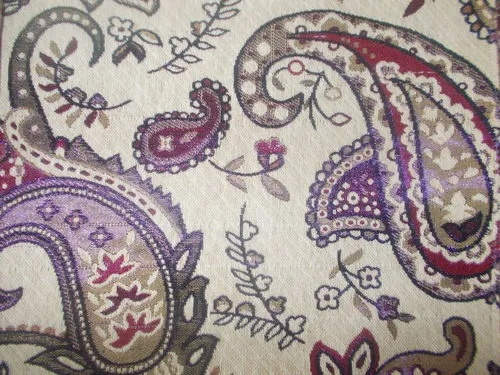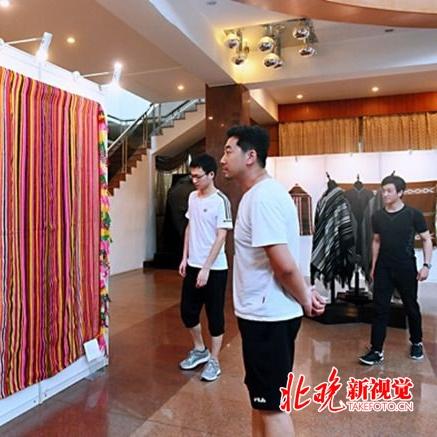The Challenge of Low Thermal Transfer Efficiency in Textiles
"The Challenge of Low Thermal Transfer Efficiency in Textiles",Textile materials, such as cotton and wool, have traditionally been used for their softness, breathability, and warmth. However, these properties are often traded off against low thermal transfer efficiency, which can limit their practical applications in certain industries. This challenge is particularly evident in the textile industry where heat management is crucial for garments that need to be worn under layers of clothing or in hot environments.,One solution to improve thermal transfer efficiency is through the use of advanced fabric technologies such as conductive threads or yarns, which can increase the ability of the fabric to conduct heat. Another approach is the development of new materials with higher thermal conductivity, such as metallic fibers or nanoparticle-infused polymers, which can enhance the heat transfer capacity of the fabric.,Despite these efforts, achieving high thermal transfer efficiency in textiles remains a significant challenge, particularly in lightweight and breathable materials. As such, future research should focus on developing more efficient fabric designs that balance comfort and functionality while maintaining high thermal performance.
Introduction: The textile industry is one of the most significant sectors globally, responsible for producing a vast array of clothing, bedding, and other materials. However, despite its widespread use, there's a growing concern over the low heat transfer efficiency (HTE) of some textile products. This issue not only affects comfort but also poses challenges in energy conservation and sustainability. In this article, we will explore the causes of low HTE in textiles, evaluate various strategies to improve it, and highlight real-life examples that highlight how this can impact both consumers and industries.
Causes of Low Heat Transfer Efficiency in Textiles:
- Material Composition: Some textiles are made from materials with low thermal conductivity, such as cotton or wool. These materials do not allow heat to easily move through them, leading to reduced HTE.
- Weave Structure: The type of weave structure can significantly affect HTE. For instance, a tightly woven fabric might trap more heat than a loosely woven one.
- Fabric Treatments: Chemical treatments like dyeing or finishing can reduce the overall thermal conductivity of the fabric, affecting its HTE.
- Fabric Thickness: Heavier fabrics may have lower HTE due to their larger surface area to volume ratio.
- Improper Care: Poor care practices, such as improper washing and drying methods, can damage the fibers and reduce their ability to conduct heat.
Strategies to Improve Heat Transfer Efficiency in Textiles:

- Selection of High-Thermal Conductivity Materials: Using materials with higher thermal conductivity, such as polyester or acrylic, can enhance the HTE of textiles.
- Advanced Weave Designs: Employing innovative weave designs that increase the interlocking of threads can improve heat flow through the fabric.
- Fiber Treatments: Adding thermal conductive additives or modifying the fiber structure can boost HTE.
- Fabric Thickness Optimization: Reducing the thickness of fabric while maintaining its strength and durability can improve HTE.
- Proper Care Practices: Adopting best practices for washing and drying textiles can help maintain their thermal properties.
Real-Life Examples: Let's consider two cases to illustrate how HTE can impact both consumers and industries:
Case Study 1: Clothing Brands A popular clothing brand recently launched a new line of thermal underwear that claims to provide better warmth compared to traditional underwear. However, consumer feedback has been mixed. While some find the thermal performance satisfactory, others report feeling cold even after wearing the underwear for extended periods. This discrepancy could be attributed to the fact that some of the underwear's fabrics have low HTE, resulting in poor thermal retention and discomfort.
Case Study 2: Textile Manufacturers Textile manufacturers face challenges in meeting the increasing demand for high-quality thermal clothing. They need to balance cost and performance when selecting materials and designing fabrics. For example, a manufacturer might choose a cheaper material with lower thermal conductivity but still aim to achieve good HTE by using advanced weave designs or incorporating thermal conductive additives into the fibers.
Conclusion: Low heat transfer efficiency in textiles can have significant implications for both individuals and industries. It not only affects comfort but also contributes to energy waste and increased energy costs. By understanding the factors that affect HTE and implementing appropriate strategies, we can create textiles that are not only stylish but also effective in providing warmth and reducing energy consumption. As the textile industry continues to evolve, it's crucial to prioritize the needs of consumers and the environment, ensuring that our clothing choices not only meet our aesthetic standards but also contribute to a sustainable future.
亲爱的朋友们,今天我们来聊聊关于纺织品热传递效率的话题,在纺织品的生产和使用过程中,热传递效率的高低直接影响到产品的性能和使用体验,下面,我们将通过一个英文案例和表格来详细说明。
案例背景
假设我们有一家纺织品制造商,近期发现其生产的纺织品在热传递效率方面存在一些问题,这可能影响到产品的保暖性能、舒适度以及使用寿命,为了解决这个问题,我们决定深入研究并找到解决方案。

案例分析
纺织品类型与热传递效率的关系
在纺织品中,不同类型和结构的纺织品其热传递效率存在差异,某些纺织品的纤维结构可能不利于热量的传导,或者纺织品的表面处理方式可能影响其热传导性能。
热传递效率低的原因分析
a. 材料选择不当:某些纺织材料的导热性能不佳,或者其加工工艺不合理,导致热传递效率低下。 b. 织造工艺问题:织造过程中的工艺参数设置不合理,也可能影响到热传递效率。 c. 表面处理不当:纺织品的表面处理方式可能影响其热反射、保温性能等,从而影响热传递效率。
英文案例说明
以下是一个英文案例来说明纺织品热传递效率低的问题:
某纺织品制造商生产的一款保暖内衣,由于使用了低导热性能的纤维材料和错误的织造工艺,导致其热传递效率低下,在寒冷的天气里穿着这款内衣,保暖效果不佳,使用体验较差。

纺织品热传递效率对比表
| 纺织品类型 | 热传递效率 | 与同类产品对比 | 问题原因分析 | 建议解决方案 |
|---|---|---|---|---|
| 高导热性能纺织品 | 高 | 与同类产品相当 | 优质材料选择和合理的加工工艺 | 加强材料质量控制和工艺优化 |
| 低导热性能纺织品 | 低 | 与同类产品相比有所下降 | 材料选择不当或织造工艺问题 | 调整材料选择和优化织造工艺,提高表面处理性能 |
英文表格补充说明
以下是英文表格补充说明:
纺织品热传递效率影响因素分析表
| 影响因素 | 热传递效率低的具体表现 | 可能原因分析 | 建议解决方案 |
|---|---|---|---|
| 纺织材料选择 | 保暖性能不佳,舒适度下降 | 材料选择不当,如纤维导热性能不佳或加工工艺不合理 | 重新选择优质材料,优化加工工艺,提高导热性能 |
| 织造工艺参数设置 | 热传递效率与同类产品相比有所下降 | 织造过程中的工艺参数设置不合理,如织造参数不当或织造流程不合理 | 调整工艺参数设置,优化织造流程,提高热传递效率 |
| 表面处理方式 | 热反射、保温性能不足 | 表面处理方式不当,如表面处理方式不利于热量传导或保温性能不足 | 调整表面处理方式,提高保温性能和反射效果 |
总结与建议
纺织品热传递效率低的问题可能与材料选择、织造工艺参数设置以及表面处理方式等因素有关,为了解决这个问题,我们可以从材料选择、织造工艺参数设置以及表面处理方式等方面入手,加强质量控制和工艺优化,提高纺织品的热传递效率,我们也可以根据具体情况采取相应的解决方案,提高产品的保暖性能、舒适度以及使用寿命。
Articles related to the knowledge points of this article:
The Journey of Overseas Textile Brands:A Case Study on 朱学兰纺织品
Exploring the Art of Home with JiaMeiYiJu Textiles



